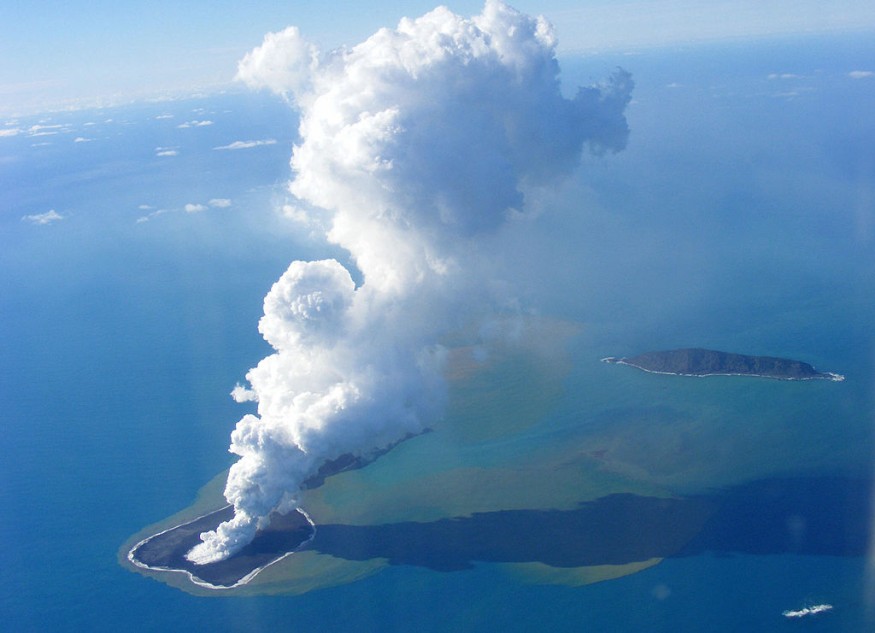When a volcano erupted near the small uninhabited island of Hunga Tonga Ha'apai in January, two weather satellites were uniquely positioned to observe the height and width of the mountain.
Together, they captured what is perhaps the tallest plume in the satellite record.
Scientists at NASA's Langley Research Center estimated that the premium from the Jan. 15 convulsive eruption was 58 kilometers high at its topmost point.
Gas, water vapor, and ash from the volcano have reached the mesosphere, the third layer of the atmosphere
An indicator of the great power of the volcanic eruption

According to IFL Science, the devasting Hunga Tonga-Hunga Ha'apai eruption that happened last month within the Tongan earth generated a deadly tidal wave and a plume reaching fifty-five kilometers (34 miles) up into the mesosphere.
This remarkable release of ashes created the right condition for one additional natural catastrophe called volcanic lightning. And this specific eruption was a record-breaker the eruption discharged nearly 590,000 lighting strikes over three days of activity, accordingrding to Vaisal, the Finnish environmental technology company.
As per SciTechDaily, "The depth of this occasion exceeds that of any hurricane cloud I have ever studied," stated Kristopher Bedka, an atmospheric scientist at NASA Langley who focuses on reading severe storms.
"We are lucky that it became considered so nicely via way of means of our modern era of geostationary satellites and we will use this information in progressive approaches to file its evolution."
According to the BBC, the US space agency scientists estimated the explosive impact that has the equal of 10 megatons of TNT, which made the Tonga case 500 times as the Hiroshima Nuclear Bombing in Japan during WWII.
Professor of Auckland University in New Zealand, Shane Cronin believes that there is a set of conditions that came together that drive a powerful explosion to the volcano.
The gas expanded and shattered the magma. And when a piece of hot magma at 1100 degrees collided with seawater at 20 degrees Celsius, the seawater around these particles turned into steam.
And if turns the seawater into vapor, it increases in volume by 70. So it will overload the eruption.
Tonga Explosion makes the world's biggest explosion in the 21st century
Before the Tonga eruption, the biggest acknowledged volcanic plume from the satellite got from Mount Pinatubo, which spewed ash and aerosols as much as 35 kilometers (22 miles) into the air above the Philippines in 1991.
The Tonga plume became 1.5 times more than Pinatubo, as per SciTechDaily.
Early records indicate the Tonga occasion may want to have measured as excessive as 5 at the volcanic explosivity index (VEI).
This might naturally acquire it the outside actual eruption picturing that Mt. Pinatubo, which came classified at six on the eight-factor scale.
Konstantin Khlopenkov, a scientist on the NASA Langley, said that with the two angles of the satellites, they were capable to recreate a 3D picture of the shadows in the area.
© 2025 NatureWorldNews.com All rights reserved. Do not reproduce without permission.





